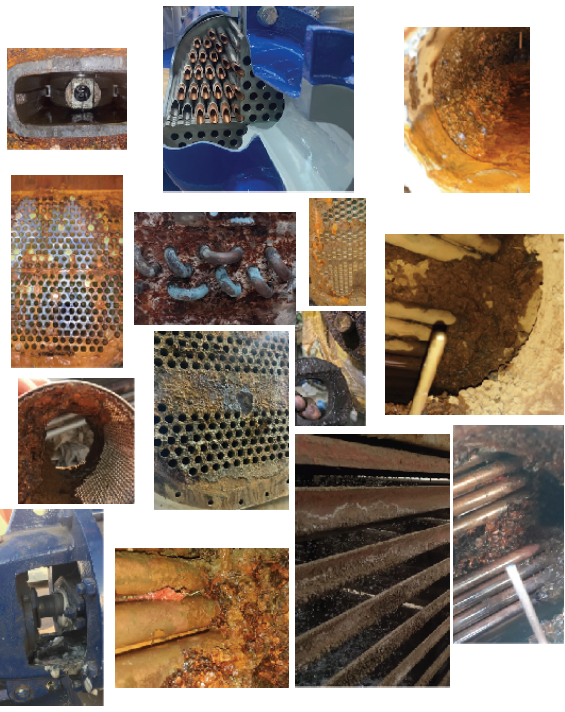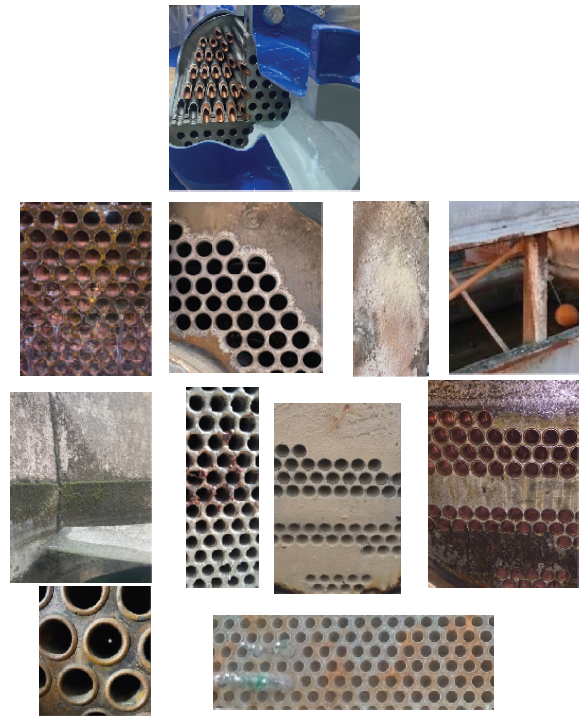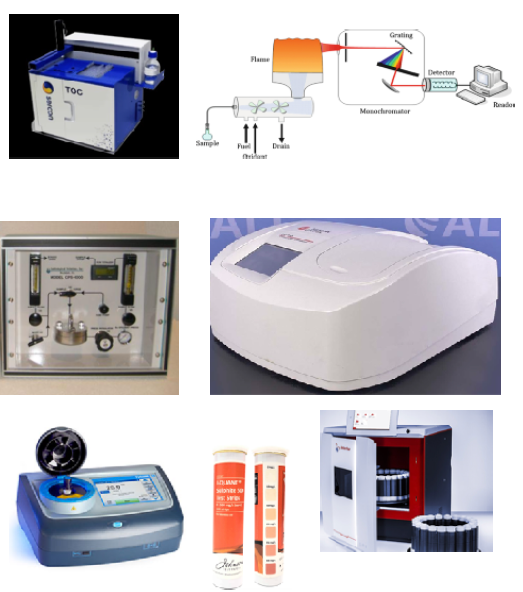Internal corrosion Preventive & Control
 Corrosion Overview
Corrosion OverviewCorrosion is one of the leading causes of failures in pipelines, pumps, valves,
fitting, coils, towers and heat exchanger.
Corrosion can case many of incident is defined as significant if it meets some of
the following conditions :
- Fatality of system, heat exchanger, coils, compressors, valves ..etc,
- High repair cost or damage.
- Highly volatile liquid releases.
Corrosion process
When iron dissolves, it does so as a positively charged ion. The process,
represented as follows, is referred to as an anodic reaction.
Fe → Fe++ + 2e-
The electrons produced from the reaction move through the metal pipe to another
location where they are in turn consumed in a reaction that produces hydroxyl
ions. The specific reaction depends on the nature of the electrolyte, but typically
is one of the following:
O2 +2H2O+4e- →4OH- 2H2O+2e- →H2 +2OH
The reactions represented above are referred to as cathodic reactions. The
Movement of the ions through the electrolyte completes the electrical circuit. The
iron ions typically react with the water and/or oxygen to form a corrosion deposit
of rust or some other iron oxide, but, in some cases, they may react with carbon
dioxide or hydrogen sulfide to form iron carbonate or iron sulfide. A corrosion
cell's anode and cathode components can be next to each other or separated by
many feet.
Pitting
Typically, corrosion in pipelines manifests as pits rather than as a uniform
reduction of the wall thickness. This is because the environment at an anodic area
tends to become more acidic, since the iron ions in solution react with the
hydroxyl ions of the water to leave an excess of hydrogen ions.
Fe++ +H2O→FeOH+H+

Microbial Corrosion
MIC (Microbiologically influenced corrosion) is caused by microbes whose actions initiate the corrosion cycle. There are several types of microbes that, while producing different effects, have been found to promote either external or internal corrosion.
Internal Corrosion
Internal corrosion generally cannot occur in a pipeline unless there is an electrolyte to complete the corrosion cell. Water or other aqueous materials (such as glycols. are needed to form the electrolyte. Also, other chemicals usually must be present: for example, suspended solid, bacteria, dissolved and non dissolved iron.. etc.
Once introduced, the corrosive materials may continue to damage the pipeline until they are removed, or until they are consumed in corrosion reactions.
Preventive/Mitigative Measures Internal Corrosion
Cleaning Pigs
Cleaning pigs frequently to scour a pipeline's internal surfaces is another viable preventive measure. There are many types of cleaning pigs. The choice of which type of pig to use depends on the product carried by the pipeline and the contaminant to be removed. Although their application may preclude the use of internal corrosion direct assessment (ICDA) models, cleaning pigs can effectively direct both liquids and corrosive solids to pig traps for removal from the pipeline. It is noted that the build-up of solids also can create internal corrosion since the solids can entrap corrosive or low-pH liquids in a corrosive matrix.
Inhibitors
Inhibitors are chemicals that can be added to a pipeline to reduce the rate of corrosion. They can adsorb onto the metal surface or react with it to form a protective film, or they may react with the corrodent to make it less corrosive. Many different chemicals are available commercially. The choice will depend on the type of product in the pipeline and the type of corrodent. Other considerations include cost, availability, toxicity, and environmental friendliness.
Biocides
Biocides can be used in the pipeline to inhibit the corrosive actions of the microbes that cause MIC and thereby reduce or eliminate MIC. Biocide is injected into the pipeline in the stream of a non- electrolytic carrier. In many cases, the biocide is added to the buffering agent so that only one addition to the gas stream is needed.
Monitoring Internal Corrosion
There are several monitoring methods that are effective in evaluating internal corrosion as well as the conditions conducive to its development.
One method involves the installation and periodic examination of removable corrosion coupons in areas of the pipeline known to be susceptible to internal corrosion. This method can provide data on corrosion rates and the conditions that are causing the corrosion.
Correct placement of the coupons is critical to the accuracy of the evaluation.
Coupons must be placed as close as possible to the entry point of the electrolyte
and in direct contact with it. There are several designs to accomplish this, but, at
present, there is no industry guidance or standard to direct operators in proper
coupon placement. To highlight the disparity, some operators have suggested that
the removable corrosion coupons be installed at low points in the pipeline, raised
just above the bottom surface of the pipe, so that the coupons would be exposed
to any liquids that

Polarisation Resistance Probes
Another popular system for on-line corrosion monitoring is the linear polarization technique, instrumented in the widely used CORRATER® systems from Rohrback Corporation. It is based on the principle that a linear relationship exists between a small electrical potential applied to a metal in a conductive liquid environment and the resulting current. The measured current bears a direct relationship to the corrosion rate.
Chemical Analysis
Chemical analysis of water can be used to track corrosion by detecting the presence of corrodants, corrosion products, the concentration of inhibitors, pH, acidity, oxygen, chloride content, conductivity, and other chemical characteristics of water.
Potentiostat instrument can measure the electrochemical techniques for corrosion measurement such as polarization. Electrochemical noise, etc. It can be used to study metal corrosion mechanism and corrosion resistance, and evaluate the coating durability and sacrificial anode current efficiency. It can also be used for rapid screening of corrosion inhibitors, fungicides, etc.
References
U.S. Department of Transportation Pipeline and Hazardous Materials Safety
Administration Office of Pipeline Safety Lab 20704 Saudi Aramco DeskTop
Standards
Copyright © Raduis AK, All Right Reserved.



